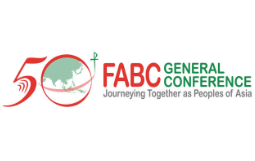Blessed John Paul I, precursor of the Francis style
Like the Italian Albino Luciani, who was known as the “smiling pope”, the Argentinian Jorge Mario Bergoglio impressed people in his very first appearance by his simplicity. Immediately after their elections, both popes spoke of their emotion during the conclave.
Sep 10, 2022

By Christopher Henning
Who knows if Pope Francis thought of John Paul I when he stepped out onto the loggia of St Peter’s Basilica after his election on March 13, 2013?
Like the Italian Albino Luciani, who was known as the “smiling pope”, the Argentinian Jorge Mario Bergoglio impressed people in his very first appearance by his simplicity. Immediately after their elections, both popes spoke of their emotion during the conclave.
“I would never have suspected what was going to happen,” John Paul I said on August 26, 1978. “As soon as the danger dawned on me, my neighbours whispered words of comfort to me.” While Francis recalled: “At the election, I had next to me the archbishop emeritus of São Paulo. When things got a little dangerous, he comforted me.”
Since the election of Pope Landon in 913, popes have taken the name of a predecessor. But Luciani and Bergoglio both deviated somewhat from that tradition. Luciani took the double-barreled name John Paul as a tribute to John XXIII and Paul VI, and Bergoglio became the first ever to take the name Francis, in honour of the saint from Assisi. The current Pope and his briefly serving predecessor both have family roots in northern Italy.
John Paul I is said to have confided: “I would have liked to be a Jesuit; I am a pope...” Both share a way of being pope, a way of embodying their responsibility with simplicity that goes as far as having a child intervene during a catechesis, or stopping at the Gate of Saint Anne, one of the entrances to the Vatican, to speak with passers-by, etc.
The day after his election, Francis went to pay the priest-hotel where he had been staying prior to the conclave. When he left his post as Patriarch of Venice, John Paul handed over his entire assets to the diocese.
“They are pastors, they come from the field, they have a sense of meeting people and the daily realities of life,” noted Vatican expert Bernard Lecomte. He recalled that, although he was Patriarch of Venice, Luciani had the soul of a parish priest. Both have also made family a priority. And Francis famously called for “a Church for the poor”, as did John Paul I. In fact, the late pope had announced that he would write an encyclical on the poor, but did not live long enough to do so.
A surprise election
Albino Luciani was born in 1912 to a peasant family in the Veneto region in Northern Italy. Ordained to the presbyterate in 1935, this parish priest with big shoes was quickly spotted, especially by the Patriarch of Venice, the future John XXIII. Pope John made him bishop of Vittorio Veneto in 1958. Paul VI then promoted him to Venice in 1969 and made him a cardinal in 1973.
Luciani had a brilliant ecclesiastical career, despite his episcopal motto being “Humilitas’. At the death of Paul VI in August 1978 the cardinals were called to Rome the elect the first pope following the Second Vatican Council (1962-65). The opposing camps clashed on the first ballot, but on August 26 during the fourth round of voting they chose Luciani. He was the man of consensus... unwillingly. “May God forgive you for what you have just done,” he told them in his very first words.
The day after his first catechesis, L’Osservatore Romano described “a precise pastoral choice, based on spontaneity and direct contact”. “He and Francis have a shared desire to speak to people, with simple words and images,” emphasised Jean-Louis de La Vaissière, the former Vatican correspondent for AFP. “But we must not make revolutionaries of them, both are faithful to the doctrine,” he cautioned. Though John Paul I did not have time to make major decisions, he humanised the papal office. And, like Francis, he imposed a style of being pope that was free of the old protocols. Luciani wanted to open the Church up more to the world and, during the conclave that elected him, had actually advocated for a pope from the South. Without a doubt the man who was the last Italian pope prepared the election of Karol Wojtyla of Krakow. Overwhelmed by the burden of his office, John Paul I suffered a heart attack on the night of September 28, 1978. It was a brutal death that fueled fantasies, especially because of clumsy communication from the Vatican.
A miracle in Buenos Aires
The twenty-six-and-a-half years of John Paul II’s pontificate quickly eclipsed the smiling pope, even if the Polish successor stated that “the importance of his pontificate was inversely proportional to its duration”. The process to beatify John Paul I, whose pontificate was a mere blink in the eyes of history, was opened in 2003. And on Sept 4, he was finally declared “Blessed”. He owes his beatification to the healing in 2011 of a child from the Archdiocese of Buenos Aires, which was then being led by Cardinal Jorge Mario Bergoglio SJ.
“(John Paul I’s) pontificate was not the passage of a meteor that fades away after a brief journey,” said Cardinal Pietro Parolin, the Vatican’s Secretary of State. “He lived what he taught,” insisted the cardinal, a native from the Veneto like Luciani and currently the president of the John Paul I Vatican Foundation. Prefacing a collection of the last Italian pope’s writings, Francis declared: “Through him, the Lord found a way to show us that the only treasure is faith, the simple faith of the apostles.” --LCI (https:// international.la-croix.com/







Total Comments:0